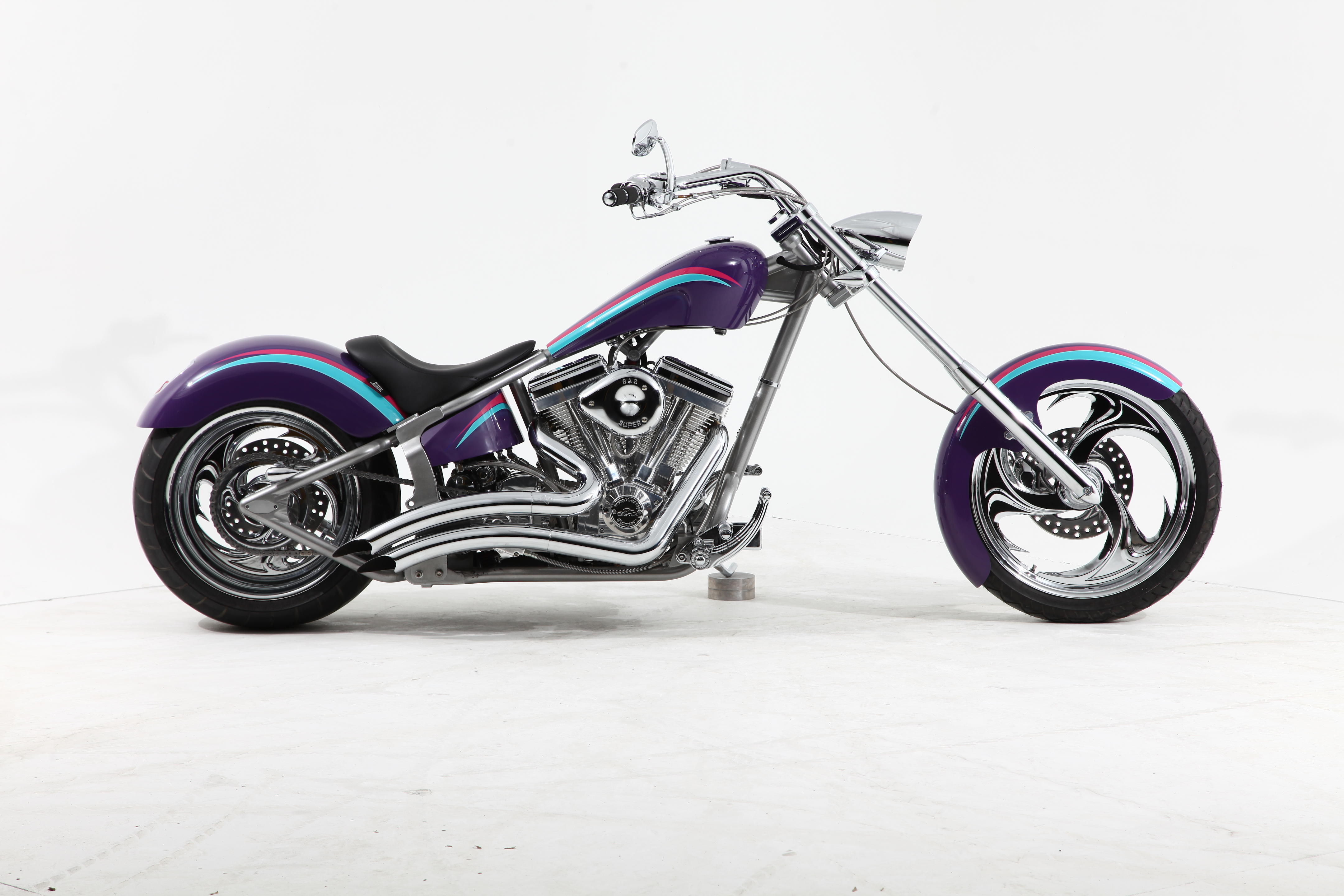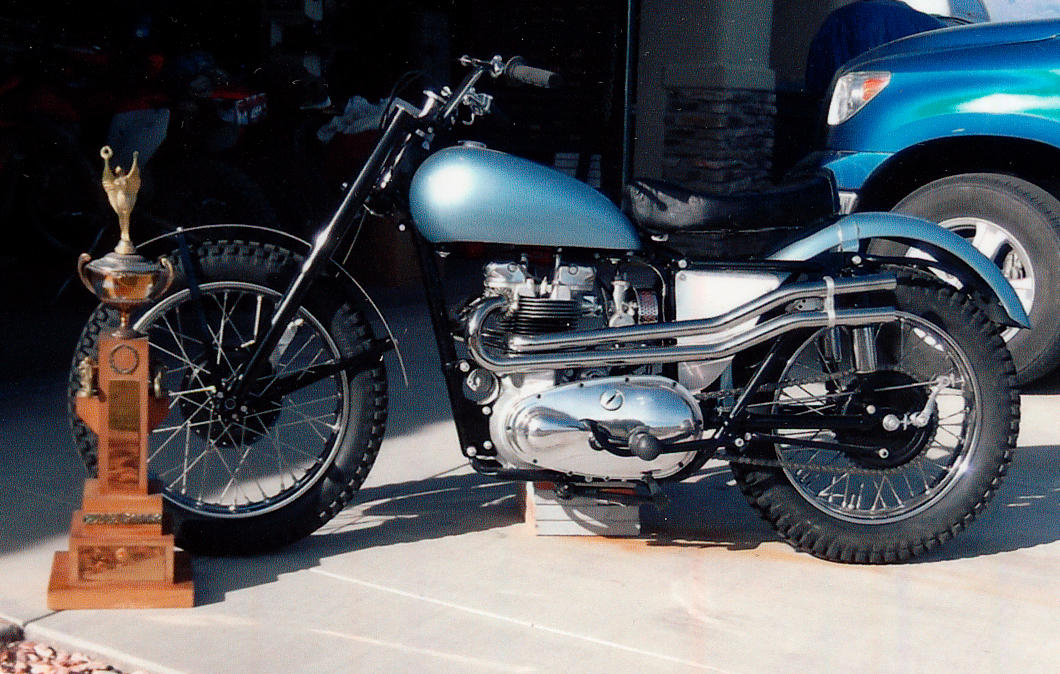When, in 1960, Benelli was forced to acknowledge that it needed a multi-cylinder machine to remain competitive in Grand Prix racing's 250cc class, the Italian firm was able to draw on past experience of this type of machine, having constructed a 'blown' quarter-liter four in 1939. The new 250 four was set transversely in the frame and built in unit with the six-speed gearbox, while early developments led to the abandonment of a separate oil tank in favor of a long, finned sump. There were two valves per cylinder operated by twin overhead camshafts driven from the crankshaft via a central gear train, and in its initial form the Benelli 250 four produced a claimed 40bhp at 13,000rpm. Although it was first seen in 1960, the 250 Benelli four did not race competitively until April 1962, when Silvio Grassetti debuted the bike at Imola. Although eliminated by a bent valve in that first race, Grassetti stunned the racing world a week later at Cesenatico, beating the seemingly invincible works Hondas of Jim Redman and Tom Phillis. The great Tarquinio Provini was signed for 1964, but even with a seven-speed gearbox and more power, Benelli found it impossible to win Grands Prix. Development continued into 1965, an eight-speed gearbox being new for that season, but by now Honda were fielding a six-cylinder 250 ridden by the best rider in the world – Mike Hailwood. Spreading its limited resources even more thinly, Benelli pressed ahead with developing a 16-valve 350 and a 500. With Provini forced into premature retirement through injury, Benelli signed Renzo Pasolini who promptly rewarded his new employers' faith by winning the 250 and 350 Italian Championships in 1968. In 1969 he reaffirmed the 350's competitiveness by beating MV-mounted reigning World Champion Giacomo Agostini six times out of seven in the Italian Championship. By this time the last of the Japanese manufacturers had pulled out of the World Championships, clearing the way for the Benelli fours to grab a slice of Grand Prix glory. Agostini and MV Agusta remained unassailable in the 350 and 500 classes at World level, but in the 250 category Benelli eventually got the better of Kent Andersson's Yamaha and Santiago Herrero's Ossa, Australian Kel Carruthers bringing the Championship back to Pesaro. There were sporadic appearances by the 350 and 500 fours over the next few years (four-cylinder 250s having been banned) but that glorious 1969 season effectively marked the end of Benelli's Grand Prix campaign. The Benelli four offered here is a copy made by that maestro among replica builders, George Beale, with a Morbidelli Equippe motor. A devotee of the AJS 7R and Matchless G50, George Beale began by manufacturing unobtainable parts for the out-of-production single-cylinder racers, eventually reaching a position where he was able to supply complete machines. Then, in the mid-1990s, he acquired a 413cc Benelli four and restored it, while the subsequent acquisition of a complete engine and loan of an original frame from Benelli collector Giancarlo Morbidelli paved the way for the re-manufacture of complete machines in 350cc, 413cc and 500cc capacities, with frames manufactured by Harris Performance. This 16 valve, seven speed, 14,000rpm Benelli has an engine built by famed Morbidelli Equippe, a frame by Harris, and details by George Beale-who spearheaded the project in the 1990s. It is an accurate retro example of the 1968-69 Pasolini era Benelli 350s that challenged the mighty MV Team. Beale built six bikes. In the late 1900s, Team Obsolete's David Roper and Rob Iannucci converted the motor from 413cc to 350cc to make it eligible for the 350cc class where it could race at full capacity (by reducing the bore diameter, as per Benelli factory practice). It was raced by its first owner at Daytona, Road America (Elkhart Lake), Willow Springs, and Laguna Seca. In 2006, Team Obsolete acquired the machine. Stu Carter raced it at Mid-Ohio 2010. Team Obsolete then gave it a major rebuild
When, in 1960, Benelli was forced to acknowledge that it needed a multi-cylinder machine to remain competitive in Grand Prix racing's 250cc class, the Italian firm was able to draw on past experience of this type of machine, having constructed a 'blown' quarter-liter four in 1939. The new 250 four was set transversely in the frame and built in unit with the six-speed gearbox, while early developments led to the abandonment of a separate oil tank in favor of a long, finned sump. There were two valves per cylinder operated by twin overhead camshafts driven from the crankshaft via a central gear train, and in its initial form the Benelli 250 four produced a claimed 40bhp at 13,000rpm. Although it was first seen in 1960, the 250 Benelli four did not race competitively until April 1962, when Silvio Grassetti debuted the bike at Imola. Although eliminated by a bent valve in that first race, Grassetti stunned the racing world a week later at Cesenatico, beating the seemingly invincible works Hondas of Jim Redman and Tom Phillis. The great Tarquinio Provini was signed for 1964, but even with a seven-speed gearbox and more power, Benelli found it impossible to win Grands Prix. Development continued into 1965, an eight-speed gearbox being new for that season, but by now Honda were fielding a six-cylinder 250 ridden by the best rider in the world – Mike Hailwood. Spreading its limited resources even more thinly, Benelli pressed ahead with developing a 16-valve 350 and a 500. With Provini forced into premature retirement through injury, Benelli signed Renzo Pasolini who promptly rewarded his new employers' faith by winning the 250 and 350 Italian Championships in 1968. In 1969 he reaffirmed the 350's competitiveness by beating MV-mounted reigning World Champion Giacomo Agostini six times out of seven in the Italian Championship. By this time the last of the Japanese manufacturers had pulled out of the World Championships, clearing the way for the Benelli fours to grab a slice of Grand Prix glory. Agostini and MV Agusta remained unassailable in the 350 and 500 classes at World level, but in the 250 category Benelli eventually got the better of Kent Andersson's Yamaha and Santiago Herrero's Ossa, Australian Kel Carruthers bringing the Championship back to Pesaro. There were sporadic appearances by the 350 and 500 fours over the next few years (four-cylinder 250s having been banned) but that glorious 1969 season effectively marked the end of Benelli's Grand Prix campaign. The Benelli four offered here is a copy made by that maestro among replica builders, George Beale, with a Morbidelli Equippe motor. A devotee of the AJS 7R and Matchless G50, George Beale began by manufacturing unobtainable parts for the out-of-production single-cylinder racers, eventually reaching a position where he was able to supply complete machines. Then, in the mid-1990s, he acquired a 413cc Benelli four and restored it, while the subsequent acquisition of a complete engine and loan of an original frame from Benelli collector Giancarlo Morbidelli paved the way for the re-manufacture of complete machines in 350cc, 413cc and 500cc capacities, with frames manufactured by Harris Performance. This 16 valve, seven speed, 14,000rpm Benelli has an engine built by famed Morbidelli Equippe, a frame by Harris, and details by George Beale-who spearheaded the project in the 1990s. It is an accurate retro example of the 1968-69 Pasolini era Benelli 350s that challenged the mighty MV Team. Beale built six bikes. In the late 1900s, Team Obsolete's David Roper and Rob Iannucci converted the motor from 413cc to 350cc to make it eligible for the 350cc class where it could race at full capacity (by reducing the bore diameter, as per Benelli factory practice). It was raced by its first owner at Daytona, Road America (Elkhart Lake), Willow Springs, and Laguna Seca. In 2006, Team Obsolete acquired the machine. Stu Carter raced it at Mid-Ohio 2010. Team Obsolete then gave it a major rebuild















Testen Sie LotSearch und seine Premium-Features 7 Tage - ohne Kosten!
Lassen Sie sich automatisch über neue Objekte in kommenden Auktionen benachrichtigen.
Suchauftrag anlegen